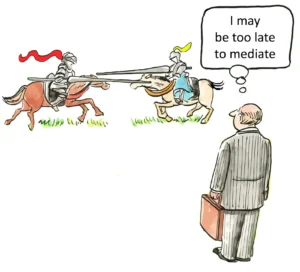Navigating the Patent Application Process: A Comprehensive Guide
In the ever-evolving landscape of intellectual property, understanding how to navigate the patent application process is crucial for inventors, entrepreneurs, and businesses alike. The journey from conceiving an innovative idea to securing a granted patent can be complex and time-consuming, but with the right knowledge and approach, it can be a rewarding endeavor that protects your valuable inventions and gives you a competitive edge in the market.
The patent application process begins with a spark of creativity – an invention that is novel, non-obvious, and useful. However, before diving headfirst into the paperwork, it’s essential to conduct a thorough patent search to ensure your idea hasn’t already been patented or disclosed publicly. This initial step can save you significant time and resources in the long run, as it helps identify potential obstacles and refine your invention’s unique aspects.
Once you’ve confirmed the originality of your invention, the next crucial step is to document your invention disclosure meticulously. This involves creating a detailed description of your invention, including its purpose, functionality, and any unique features that set it apart from existing technologies. Proper documentation not only helps in drafting a strong patent application but also serves as evidence of your invention’s conception date, which can be critical in potential legal disputes.
With your invention disclosure in hand, it’s time to decide on the type of patent application that best suits your needs. For most inventions, a utility patent is the go-to choice, as it protects the functional aspects of an invention. However, if your invention’s value lies primarily in its ornamental design, a design patent might be more appropriate. In some cases, inventors opt for a provisional patent application as a temporary measure to secure an early filing date while buying time to refine their invention and assess its market potential.
Drafting a patent application is a critical and often challenging part of the process. The application must include a clear and concise description of your invention, along with detailed drawings or diagrams that illustrate its components and functionality. Perhaps the most crucial element of the application is the claims section, which defines the legal scope of protection for your invention. Crafting well-written claims requires a delicate balance – they must be broad enough to provide meaningful protection but narrow enough to withstand scrutiny during examination.
Given the complexity and legal implications of patent applications, many inventors choose to work with a registered patent attorney or agent. These professionals have the expertise to navigate the intricacies of patent law and can significantly improve your chances of securing a strong patent. While it’s possible to file a patent application on your own, the potential pitfalls and long-term consequences of poorly drafted applications often outweigh the upfront cost savings.
Once your application is complete, it’s time to file it with the United States Patent and Trademark Office (USPTO). The filing process involves submitting your application along with the required fees. It’s crucial to ensure that all necessary documents are included and that the application meets the USPTO’s formatting and content requirements. Any oversights at this stage can lead to delays or even rejection of your application.
After filing, your application enters the examination phase. A USPTO patent examiner will review your application to determine if it meets the criteria for patentability. This process often involves back-and-forth communication between the examiner and the applicant (or their representative) through office actions. These official communications may raise objections or rejections based on prior art or other issues, and responding effectively to these office actions is crucial for moving your application forward.
During the examination process, you may need to make amendments to your application or provide arguments to overcome the examiner’s objections. This is where the expertise of a patent attorney can be particularly valuable, as they can craft persuasive responses that address the examiner’s concerns while maintaining the broadest possible protection for your invention.
If the examiner determines that your invention meets all the requirements for patentability, they will issue a notice of allowance. This is a significant milestone in the patent application process, indicating that your patent will be granted upon payment of the issue fee. However, it’s important to note that the process doesn’t end here – maintaining your patent requires paying periodic maintenance fees to keep it in force for its full term.
While the standard patent application process can take several years, there are options for expediting the process in certain situations. The USPTO offers a Track One prioritized examination program that aims to provide a final disposition within 12 months. This can be particularly valuable for inventions in fast-moving industries where time-to-market is critical.
It’s worth noting that patent protection is territorial, meaning that a U.S. patent only provides protection within the United States and its territories. If you’re looking to protect your invention in other countries, you’ll need to consider filing international patent applications. The Patent Cooperation Treaty (PCT) provides a streamlined filing procedure that allows you to seek patent protection in multiple countries simultaneously.
As technology continues to advance, the patent landscape is evolving to keep pace. Emerging trends in patent law, such as the increasing role of artificial intelligence in both invention creation and patent examination, are shaping the future of intellectual property protection. Staying informed about these developments can help you navigate the patent application process more effectively and make strategic decisions about your intellectual property portfolio.
One area of particular interest is the growing emphasis on green technology patents. With global efforts to combat climate change and promote sustainability, there’s been a notable increase in patent filings related to renewable energy, waste management, and other environmentally friendly technologies. Many patent offices, including the USPTO, have implemented programs to expedite the examination of green technology patent applications, recognizing the urgent need for innovation in this field.
Another trend to watch is the ongoing debate surrounding patent eligibility, particularly in the realm of software and business method patents. Recent court decisions have created some uncertainty in this area, and there are ongoing discussions about potential legislative reforms to clarify and potentially broaden the scope of patent-eligible subject matter. Staying abreast of these developments is crucial for inventors and businesses operating in these sectors.
The digitalization of patent offices worldwide is also transforming the patent application process. The USPTO, like many other patent offices, has implemented electronic filing systems and online tracking tools to streamline the application and examination process. These digital transformations aim to increase efficiency, reduce processing times, and improve transparency for applicants.
As you navigate the patent application process, it’s important to consider your overall intellectual property strategy. Patents are just one form of intellectual property protection, and in some cases, other forms such as trade secrets or copyrights might be more appropriate for protecting certain aspects of your innovation. A comprehensive IP strategy should consider all available forms of protection and how they can work together to safeguard your competitive advantage.
It’s also worth considering the potential for patent monetization beyond simply protecting your own products. A strong patent portfolio can be a valuable asset for licensing, cross-licensing agreements, or even as a deterrent against potential infringers. Some companies have built successful businesses around licensing their patented technologies to others in their industry.
While the patent application process can be challenging, it’s important to remember that perseverance often pays off. Many successful inventions faced multiple rejections before ultimately being granted patent protection. Thomas Edison, one of history’s most prolific inventors, famously said, “I have not failed. I’ve just found 10,000 ways that won’t work.” This mindset of persistence and continuous improvement is valuable not only in the invention process but also in navigating the patent application journey.
As you move forward with your patent application, remember that the process is not just about securing legal protection – it’s about fostering innovation and contributing to the advancement of technology. The patent system is designed to encourage the disclosure of new inventions in exchange for temporary monopoly rights, ultimately benefiting society by expanding the pool of public knowledge.
In conclusion, navigating the patent application process requires a combination of technical knowledge, legal understanding, and strategic thinking. While the journey can be complex and at times frustrating, the potential rewards – both in terms of protecting your innovations and creating value for your business – make it a worthwhile endeavor. By approaching the process with diligence, patience, and a willingness to adapt, you can maximize your chances of success in securing strong patent protection for your inventions.
Whether you’re a solo inventor working on a groundbreaking new technology or a large corporation managing a vast patent portfolio, understanding the nuances of the patent application process is key to effectively protecting and leveraging your intellectual property. As the landscape continues to evolve, staying informed about changes in patent law, emerging technologies, and global IP trends will be crucial for navigating the patent application process successfully in the years to come.
Citations:
- Steps to Get a Patent in the US
- Guide to Filing a Patent
- Applying for Patents from Idea to Filing
- Emerging Trends in Patent Law
- USPTO Changes to Watch in 2025
- Future of Intellectual Property Law 2025
- How Demand Media Targets Keywords
- Effective Patent Searching with Keywords
- Choosing Great Keywords for Patent Research
- Low Competition Keywords Guide
- Applying for a Utility Patent
- How to File a Patent Video
- USPTO Patent Application Process
- Essential Guide to Patent Filing
- USPTO Patent Application Basics
- Patent Filing Process Explained
- Patent Applications Handbook 2024
- Overview of the Patent Process
- Filing a Patent in America Guide
- UTexas Guide to Patent Research
- SBIR Patent Filing Tutorial
- Filing Patent Documents in Docx
- Patent Law Trends for Private Equity
- Patent Litigation Trends in the USA
- New USPTO Patent Fees for 2025
- Legal Trends Shaping IP Licensing 2025
- Patent Delays Expected in 2025
- Summary of 2025 USPTO Fee Changes
- Patent Review Topics for 2025
- Patent Office Turmoil in 2025
- Global IP Trends at IPWatchdog Live
- USPTO News and Updates
- 2025 IP Outlook for Patent Holders
- PTAB and USPTO Update 2025
- High and Low Competition Keywords
- Google Patents SEO Guide
- Brainstorming Keywords for DIY Patent Search
- Google Patent US10534781B2
- SEO for Patent Law Firms
- Keywords for Patent Research
- Google Patent US11941073B2
- Google Patent US20120284252A1
- How to Search for Patents
- Finding Profitable Low Competition Keywords
- Understanding Google Patent for SEO
- Step-by-Step Patent Filing Process
- Patent Filing Process Video
- How to Write a Patent Application
- How to Patent an Idea
- Getting a Patent Yourself
- 2025 Patent Trends and Challenges
- USPTO Patent Fee Changes for 2025
- IP Trends to Expect in 2025
- Important USPTO Fee Changes 2025
- Global Patent Filing Trends 2025
- Patent Keyword Search Guide
- USPTO Patent Searching Guide




















